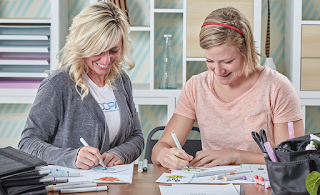 Paper crafting workshops
Paper crafting workshopsI can't believe that this year is almost over! I was going over my lists and I realized that a new year means new workshops are listed on the Copic website. Lots of dates and locations are now listed.
New for 2016:
Coloring Flowers: Beyond the Book- This workshop includes some great images from the coloring flowers book, but also includes some new images. This class is taught on the same day, in the evening on any day that we are also offering a Standard Certification class.
Continuing from last year:
Standard Copic Certification: The ultimate class for paper crafters who want to know all the fundamentals of using Copic Markers. Learn how to test papers, inks, airbrush, and choose colors. Learn multiple blending techniques and experiment with a little mixed media.
Intermediate Certification: This class is perfect for people who have taken the Standard Certification class and now want to learn how to color more like an artist. Learn how to apply shadows and choose colors beyond the basics. Discuss composition ideas and how to color tricky situations and more complex images.
Whimsical Faces & Hair: Learn tips and tricks for coloring a variety of fun faces and hairstyles. Try many different color combinations and get ideas for adapting into your own stamp projects.
Vintage Values & Monotones: Have you ever wanted to color beautiful sepia images or in a limited color palette? This class is a great way to experiment with a variety of colors and techniques for beautiful images.
Dress for Success: Coloring Clothing & Accessories: From wrinkles to textures and patterns, this class will help you color many different fabrics and fabric styles. Leather, plaid, metal, and so much more!
Lots of exciting opportunities in 2016 to learn how to use Copic Markers. For more info about any class I've mentioned please visit the Copic workshop page on the website.







